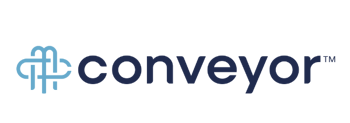With worldwide end-user SaaS spending forecasted to climb to nearly $200 million in 2023, the software-as-a-service industry continues to broaden its horizons. For SaaS business owners, rising demand means more opportunities to expand your subscription base — for those who are able to stay competitive in saturated markets.
Mapping out your growth marketing strategy, therefore, is key to stable, scalable SaaS business expansion.
In this article, we’ll outline the steps you need to take to develop a growth strategy playbook that considers the challenges, demands, and opportunities that are unique to SaaS organizations. Let’s take a closer look.
But First: What Exactly Is SaaS Growth Marketing?
As its name suggests, growth marketing strategies emphasize sustainably building new customer relationships, reengaging existing customers, and discovering data-backed insights that unlock a growth mindset across your organization. Similarly, growth marketing for SaaS is all about increasing your monthly recurring revenue (MRR), improving your customer retention, and maximizing your customer lifetime value.
5 Growth Marketing Tactics for B2B SaaS Businesses
Now that we have the basics covered, let’s dive into the marketing tactics that should make it into your SaaS company’s growth roadmap.
1. SEO
SaaS business owners and marketers often look to paid marketing channels for a fast injection of leads and traffic. And although PPC advertising can be a worthy addition to your marketing efforts, performing well in organic search can help yield a consistent influx of traffic — and one where ROI builds with time. Statistics from G2 suggest that the B2B SaaS industry enjoys an over 700% return on investment with their SEO efforts, and on average reaches a break-even point at the seven-month mark.
That being said, developing a winning SEO strategy for SaaS does not come without its own unique challenges. Here are a few to look out for:
Increasing Competition
Compared to other verticals, competition in B2B SaaS spaces is fierce, which can make ranking for your target keywords an uphill battle. Not only are you up against product competitors, but software review platforms, third-party marketplaces, and other online business publications all occupy valuable real estate in search engine results pages (SERPs).
Give yourself the best chance by staying smart about the keywords your target and opting for low-difficulty terms where you’ll see results more quickly. Search tools like Semrush, Moz, and Ahrefs provide keyword difficulty scores, which let you identify which topics would take the most effort to rank at a cursory glance.
It’s also worth conducting a content gap analysis, homing in on keywords that are relevant to your business where your competitors are missing. These low-competition keywords can help you gain a foothold in the topic space and begin building online authority to outrank existing competitors in the long run.
Backlinks
Although Google has placed less emphasis on backlinks over time, earning high-quality, relevant links to your website is still an important ranking factor. Building these high-quality links is often a time-consuming, manual process, and SaaS websites are no exception to the rule.
Fortunately, SaaS marketers have a few extra tools at their disposal to earn natural, high-authority backlinks over time. Calculators, free sample tools, and industry guides are all link-worthy assets, thanks to the value they provide users.
2. Content Marketing
Although your SEO and content marketing efforts will go hand-in-hand, the benefits of engaging, actionable, and audience-driven content expand far beyond your performance in organic search. To grow revenue in this increasingly competitive online landscape, SaaS marketers need to leverage content strategies that not only drive organic traffic but also drive online conversions. With that in mind, it’s no surprise that 70% of SaaS companies today have already developed content marketing strategies in some capacity.
So how can you create content that cuts through the clutter and catalyzes your audience to take action? Here are a few key pieces of your SaaS content strategy to consider:
Customer Education
SaaS products require a unique approach to their content marketing efforts for one essential reason: they often come with a steep learning curve. To that effect, you’ll need to expand beyond the typical top-of-funnel, middle-of-funnel, and bottom-of-funnel content buckets and additionally create helpful resources for your existing customers.
Remember, as a SaaS company you’re selling more than a product —you’re offering your continued services for your customers. Your content strategy should reflect that same service-minded, flywheel approach. By creating content that offers practical tips, solutions to common problems, and strategies for maximizing their investment in your solution, your marketing efforts can help you extend your customer lifetime value and create a reliable customer base that paves the way toward future expansion. That includes:
- Product updates. Unlike physical products, SaaS solutions can constantly evolve to include new features and capabilities. Keep your current customers in the know with email campaigns highlighting new features, video tutorials guiding users through these new capabilities, and more.
- How-to guides. In-depth how-to guides and articles are a great tool to ensure your customers are making best use of your services.
- FAQ pages. If you’re doing a good job of listening to your customers, you’ll more likely than not start to pick up on the most common questions users have about your product — from onboarding and beyond. Collate these questions into an FAQ page or section on your website to help users quickly address any uncertainties about your offerings.
Brand Awareness
As the SaaS market gets more crowded, brand visibility and product differentiation only become more critical for growth. Brand recognition is also key to growing your brand through customer trust. In fact, in their 2022 Digital Consumer Report, Salsify found that nearly half of U.S. consumers are willing to spend more for a brand name they know and find trustworthy.
Content marketing provides several avenues for SaaS companies looking to grow their online brand presence. Depending on the size of your online niche, guest posting with industry publications can expose your brand to new audiences and begin to establish your own credibility as a thought leader in the space. Similarly, engaging in online communities and forums where your prospective customers congregate can draw attention to your expertise in the space and bring awareness to your brand.
Content Quality
Compared to 10 or even 5 years ago, content marketing efforts in 2023 need to be laser-focused on outputting high-quality work due to a few factors. The rising popularity of generative AI tools, like ChatGPT in content marketing, have democratized the content production process. In other words, anyone —including your competitors —can generate decent content with a few strokes of the keyboard.
At the same time, Google’s helpful content update from last year suggests that the company’s continued attention will be in serving the highest quality results in search. According to Google, that means developing content that is made with your target audiences in mind, demonstrates your expertise in the subject matter, is centered around your site’s primary topic areas, and satisfies the user’s original search intent.
Although emerging AI technologies can support your content efforts, focusing on quality will help you stand out against competitors that are using the same tools to churn out run-of-the-mill content. SaaS companies that invest in the integrity of the resources they output are also those best positioned to resonate with their audiences and stand out amongst the competition.
3. Buyer Enablement
The B2B buyer’s journey has shifted over the years, and now, more than ever, your customers are in the driver’s seat. Internet-savvy consumers have more readily accessible information than ever before, which hugely affects when, where, and how they make a SaaS purchase. Research from Gartner estimates that B2B customers spend 45% of their buying activity time researching independently (both off- and online).
Brands who practice buyer enablement give customers all the information they need to understand their solutions and how these solutions address customer needs. Let’s walk through the core pieces of a SaaS buyer enablement strategy.
Minimizing Friction
Because consumers spend so much time decision-making before they even engage SaaS vendors, it’s critical that you reduce bumps even at the top of the funnel. To start, you’ll need to map out your buying process — an exercise that you should perform in concert with your sales team.
Then, focus on pinpointing potential friction points. In the context of buyer enablement, friction points are any steps in a buyer’s journey where they are roadblocked from information they need to inform their decision. Common friction points for the SaaS industry include:
-
Muddled messaging that makes parsing out your value proposition difficult.
-
Informational articles that prioritize discussing product features over solving the user’s pain points.
-
Poor website experience, including misleading or outdated product information, poor accessibility, and unclear calls to action.
-
Lack of bottom-of-the-funnel content, such as case studies and whitepapers, that users may need to trigger their purchase decision.
Creating Outside-the-Box Content
We’ve already touched on content marketing above, but your approach to content strategy becomes all the more important within the context of a buyer enablement strategy. Because consumers spend so much time decision-making before they even engage product vendors, it’s critical that you give potential buyers the right information at each step of the funnel.
That means you’ll need to venture beyond traditional thought leadership and consider the resources that will drive maximum impact for users in your niche or industry. Calculators, pricing or competitor comparison matrices, and product simulators are all great examples of SaaS materials that will encourage new customer acquisition.
Redrawing Your Buyer Personas
If you’re feeling lost in your approach to buyer enablement, it might be time to return to the drawing board with your buyer personas. Personas help marketing teams understand the motivations behind your different target audiences —and how these motivations influence their unique paths to purchase. By having a clear vision of your target personas, you’ll more easily anticipate your customers’ information needs and, therefore, enable them to purchase.
4. Website Strategy
When used to its full potential, a SaaS website becomes a powerful engine supporting your digital growth marketing and sales efforts. A thoughtfully crafted website strategy helps you attract, engage, convert, and continue to delight your customers.
Let’s dive into the most important website considerations that can fuel your growth strategy.
User Experience
In 2023, excellent website user experience is a must-have for brands selling their products and services online, and it can make or break your capacity for growth. According to QED42, 70% of customers who abandon their purchase do so because of poor user experience. On the flip side, 8 out of 10 customers are willing to pay more for an improved user experience.
Website UX also provides reassurance that your actual SaaS products are designed with the user experience in mind. And because page experience is an important ranking signal for Google, focusing on page load speed, mobile friendliness, and core web vitals can also enhance your standings in organic search.
Conversion Rate Optimization
A decent growth marketing strategy will increase your website traffic and visibility, but a great strategy will find ways to turn traffic into qualified leads. That’s where conversion rate optimization, or CRO, comes into play.
Marketers have several opportunities to increase the rate of conversions on their websites, starting with the strategic placement and contextualization of CTAs, the use of persuasive language and attention grabbing design elements, and the integration of concise and compelling lead forms.
Scalability
Effective website strategies ensure that your website is ready to scale and adapt as your revenue grows and product offerings expand. After all, an increase in demand is only beneficial if you have the infrastructure in place to support additional web traffic, higher lead volumes, and more customer relationships.
Fostering scalability starts with designing website systems that seamlessly integrate with your existing tech stack, including CRM platforms, content management systems, payment solutions, and automation tools.
5. Growth KPIs
Finally, putting all these strategies to work in a way that launches your brand toward growth will require you to think carefully about the KPIs you track. Monthly recurring revenue (MRR), customer churn rate, customer lifetime value (CLV), and other key SaaS metrics help you monitor the health of your marketing programs, make data-informed pivots to strategy, and maximize your return on marketing investment (ROMI).
Amplify Your Growth Efforts with Our Help
Whether you’re a SaaS business owner who is new to the world of marketing or an industry veteran looking to accelerate your marketing efforts, partnering with the right marketing agency can help you reach your growth business objectives faster and more effectively.
Our team of B2B marketing professionals has years of experience turning SaaS companies into lead-generating machines, and we’re ready to advise and execute strategies that improve your customer acquisition and reduce churn —all at the speed SaaS demands.
If you’re in the market for a SaaS marketing partner you can trust to deliver results, get in touch with our team.



